Sarracenia spp. (Pitcher Plant)
Bloom Time: August to October
Sun Requirement: Full to Part Sun
Water Requirement: High
Wildlife: Bumblebees
Tolerates: Wet Soils
Native to North America: Yes
Zones: 5a to 9b
Other: This carnivorous plant’s leaves have evolved into a pitcher shape in order to trap insects. The red and white veined tubular leaves and unique flowers will add interest to your bog and water gardens! Requires consistently moist soil.
Location: Herb Garden

Tricyrtis formosana ‘Dark Beauty’ (Dark Beauty Toad Lily)
Bloom Time: September to October
Sun Requirement: Part Sun to Full Shade
Water Requirement: Medium
Wildlife: Bees and hummingbirds
Tolerates: Wide array of soil conditions
Native to North America: No
Zones: 4 to 9
Other: This toad lily makes a very impressive garden specimen with glossy leaves and dramatic purple and white spotted orchid-like flowers. Given time, it will spread to create many clusters. Ideal for woodland gardens and is prized for its late season blooms.
Location: Dogwood Garden
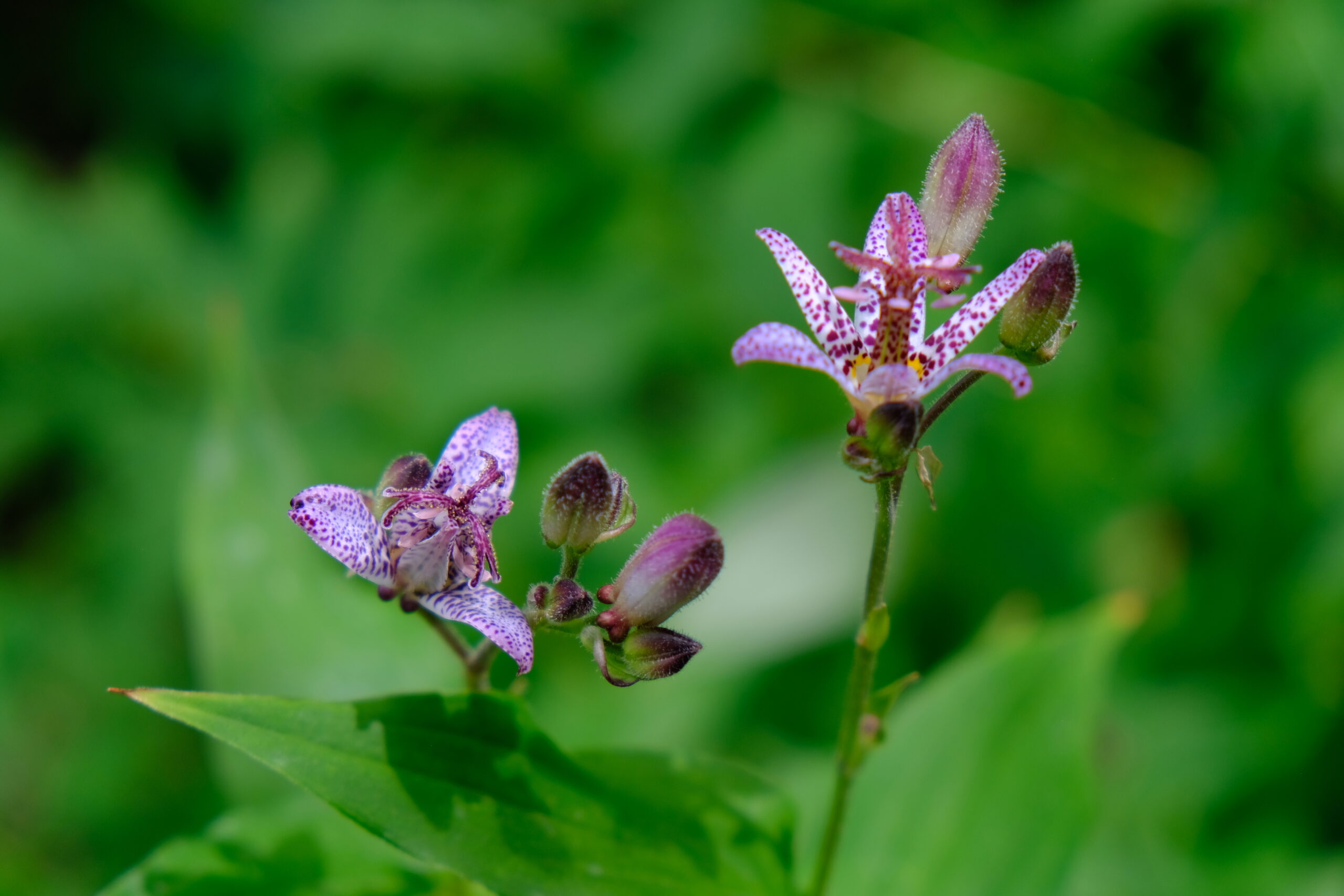
Callicarpa americana (American Beautyberry)
Bloom Time: June to August
Sun Requirement: Full Sun to Part Shade
Water Requirement: Medium
Wildlife: Birds and squirrels
Tolerates: Drought and Clay Soils
Native to North America: Yes
Zones: 6 to 12
Other: Named after its magenta berries that put on a brilliant fall show, this shrub is low maintenance and a magnet for birds. Mature plants reach around 3 to 5 feet tall and is ideal for pollinator or wildlife gardens.
Location: Howe Garden
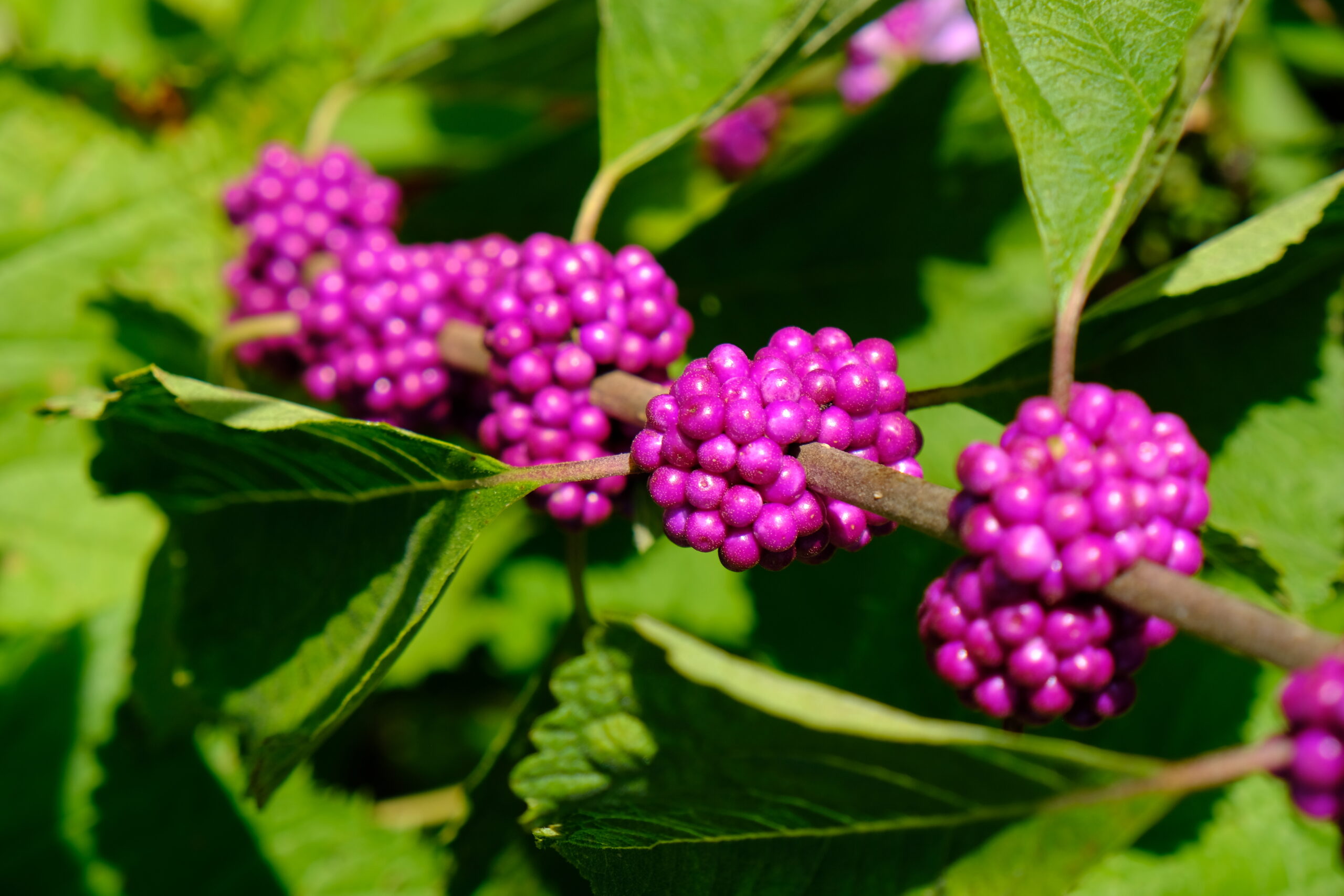
Torreya taxifolia (Stinking Cedar)
Bloom Time: N/A
Sun Requirement: Part Shade
Water Requirement: Medium
Wildlife: Small mammals
Tolerates: Shade
Native to North America: Yes
Zones: 5 to 9
Other: This small to medium sized evergreen coniferous tree is listed as a critically endangered species. It is nearly extinct in the wild, threatened by a fungal disease of the stem. Foliage emits an odor when crushed, hence the name.
Location: Howe Garden
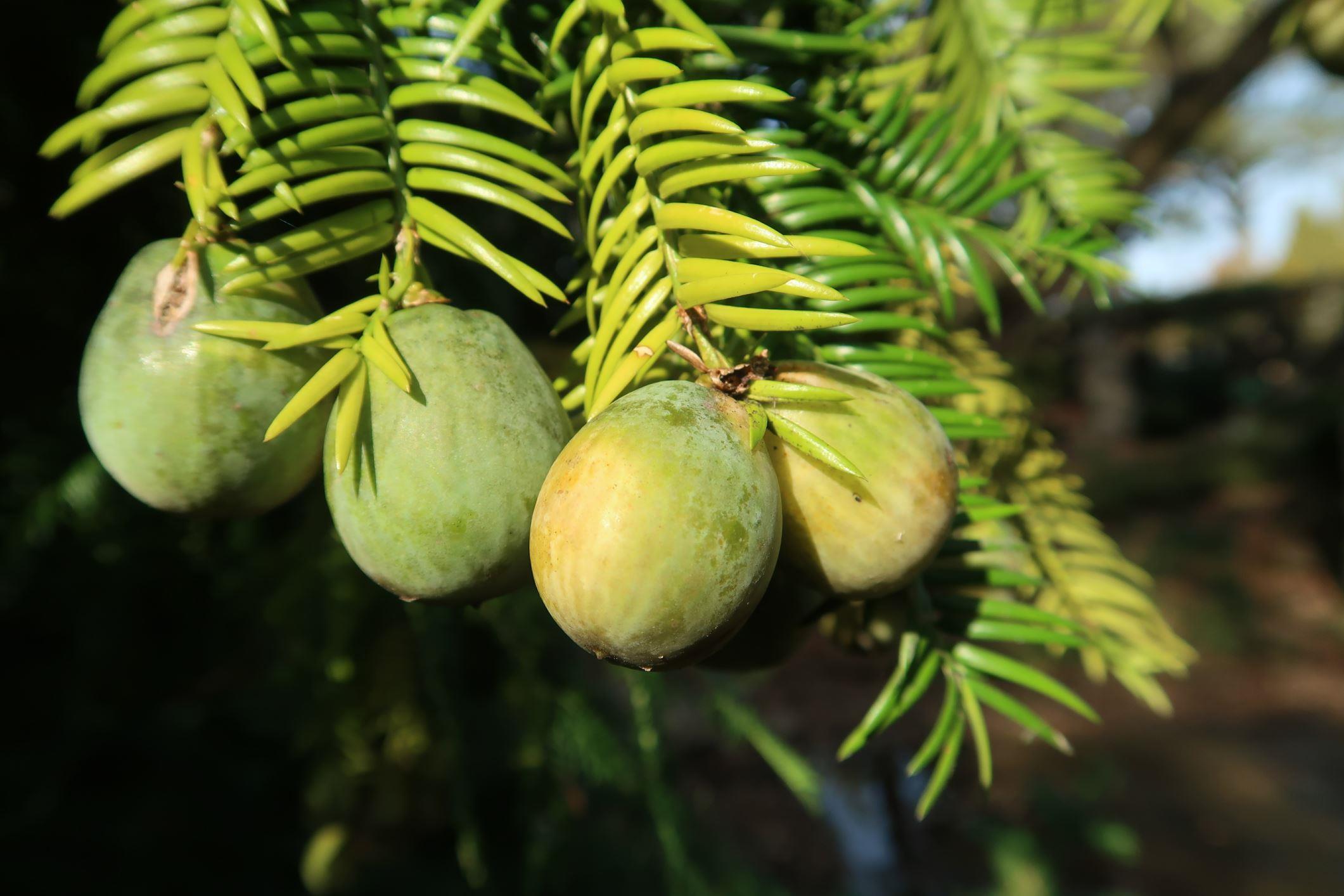
Solidago rugosa ‘Fireworks’ (Rough Goldenrod)
Bloom Time: September to October
Sun Requirement: Full Sun to Part Shade
Water Requirement: Medium
Wildlife: Bees, beetles, and butterflies
Tolerates: Deer, Clay and Wet Soil
Native to North America: Yes
Zones: 4 to 8
Other: This clump-forming perennial provides a bold splash of color in the late season. Rough goldenrod featues arching flowers that resemble yellow fireworks cascading off the plant. They are a great source of nectar and pollen, attracting various species of insects.
Location: Howe Garden
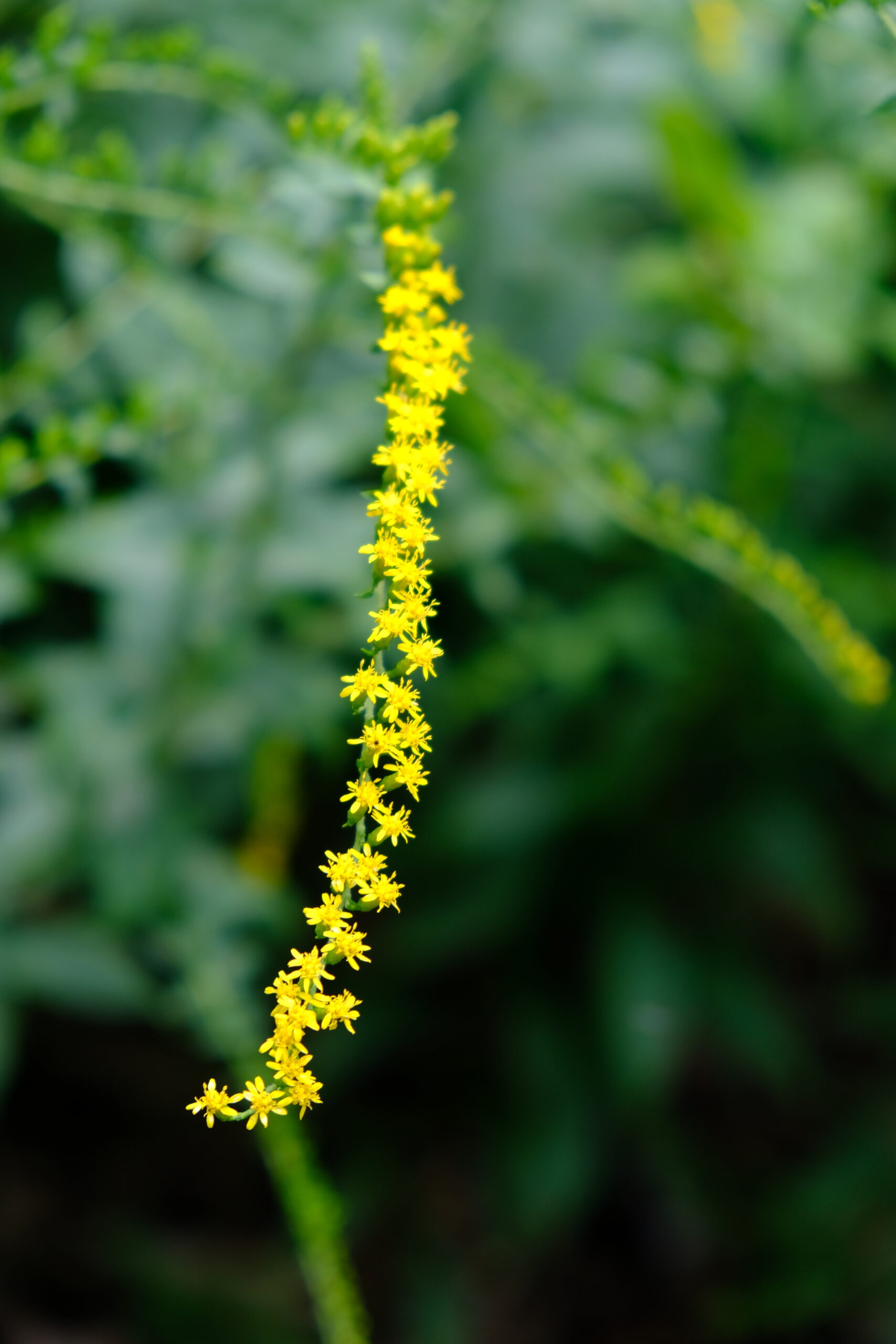
Rudbeckia subtomentosa ‘Little Henry’ (Sweet Coneflower)
Bloom Time: August to October
Sun Requirement: Full Sun
Water Requirement: Medium
Wildlife: Butterflies
Tolerates: Deer, Drought, Clay and Dry Soil
Native to North America: Yes
Zones: 4 to 8
Other: This compact, upright perennial shows off with lovely brown-eyed daisies with quilled yellow petals. It grows about four feet high and has sweetly scented foliage.
Location: Bracken Foundation Children’s Garden
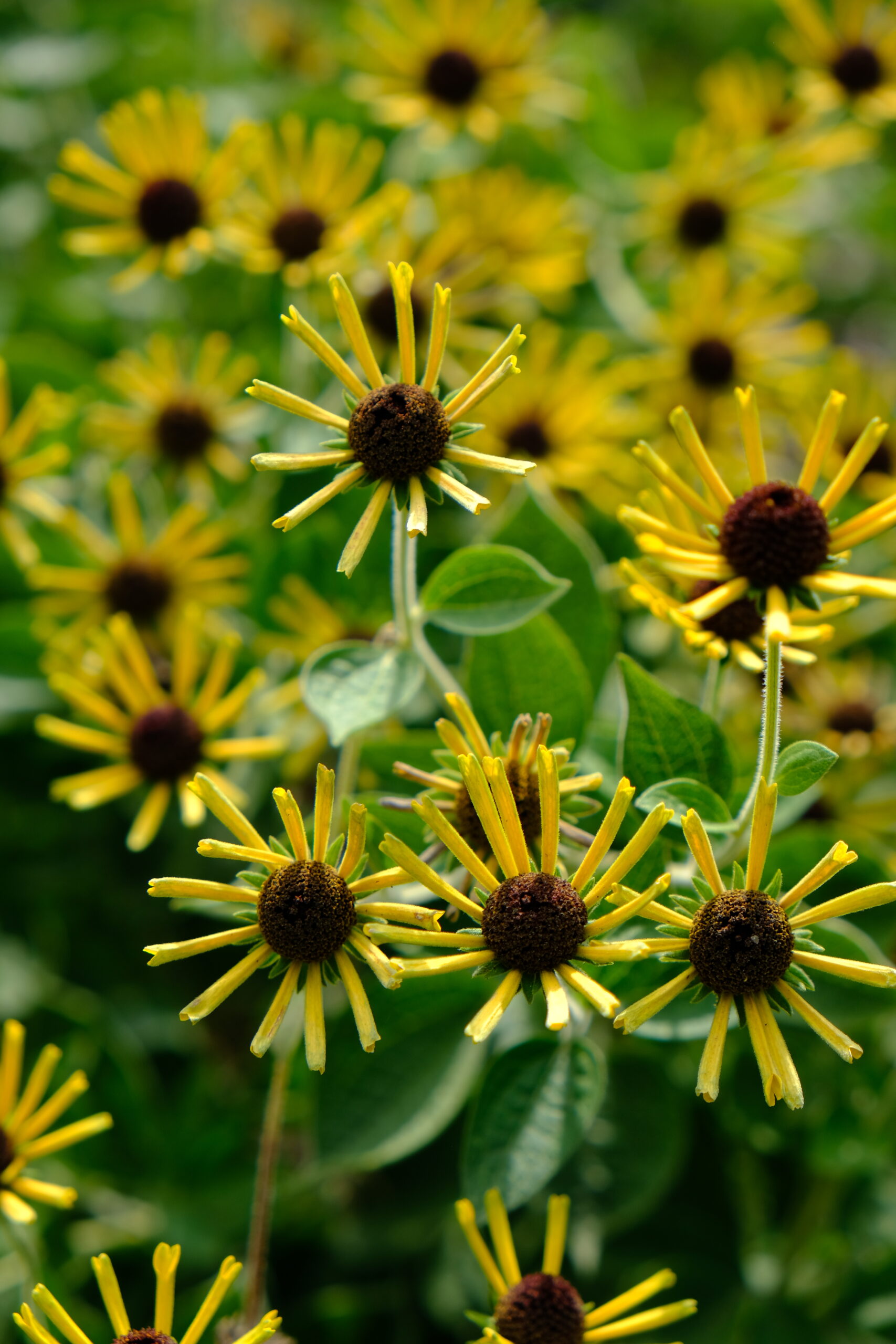
Hydrangea macrophylla ‘Twist N Shout’ (Twist N Shout Hydrangea)
Bloom Time: August to October
Sun Requirement: Part Shade
Water Requirement: Medium
Wildlife: Bees
Tolerates: N/A
Native to North America: No
Zones: 4 to 9
Other: This small shrub grows 3 to 4 feet tall and the stems are vivid red. The blooms are classic lacecaps with color ranging from deep pink to deep purple blue tones. This hydrangea does best in light shade and has nearly year round beauty!
Location: Bracken Foundation Children’s Garden
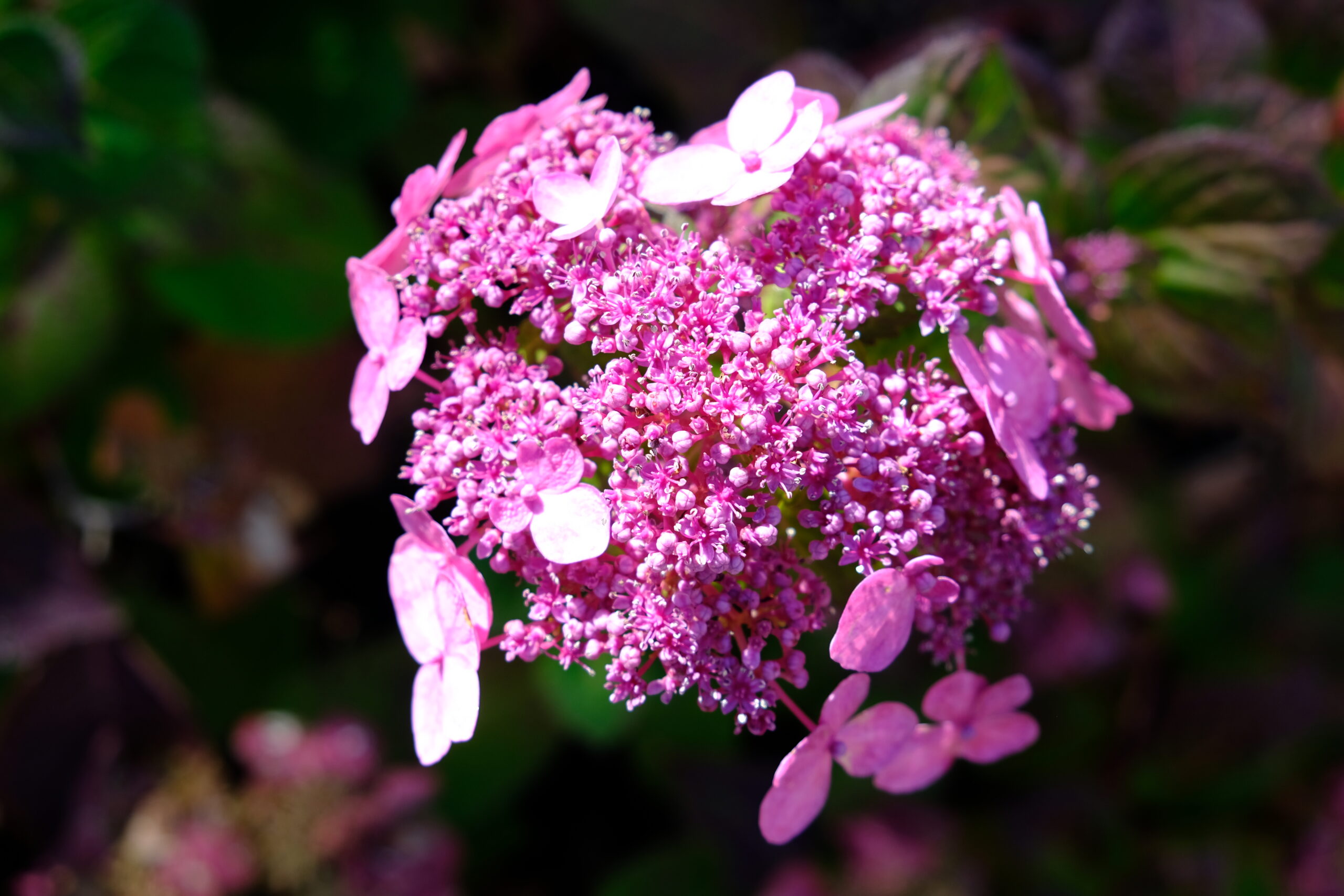
Lantana camara ‘Miss Huff’ (Hardy Lantana)
Bloom Time: July to November
Sun Requirement: Full Sun
Water Requirement: Medium
Wildlife: Butterflies
Tolerates: Drought
Native to North America: No
Zones: 7 to 11
Other: This is the most cold hardy of the lantana. It is an excellent choice for mass plantings and produces showy orange and pink flowers. Miss Huff lantana attracts many butterflies but is not particularly attractive to deer.
Location: Sigourney Cheek Literary Garden
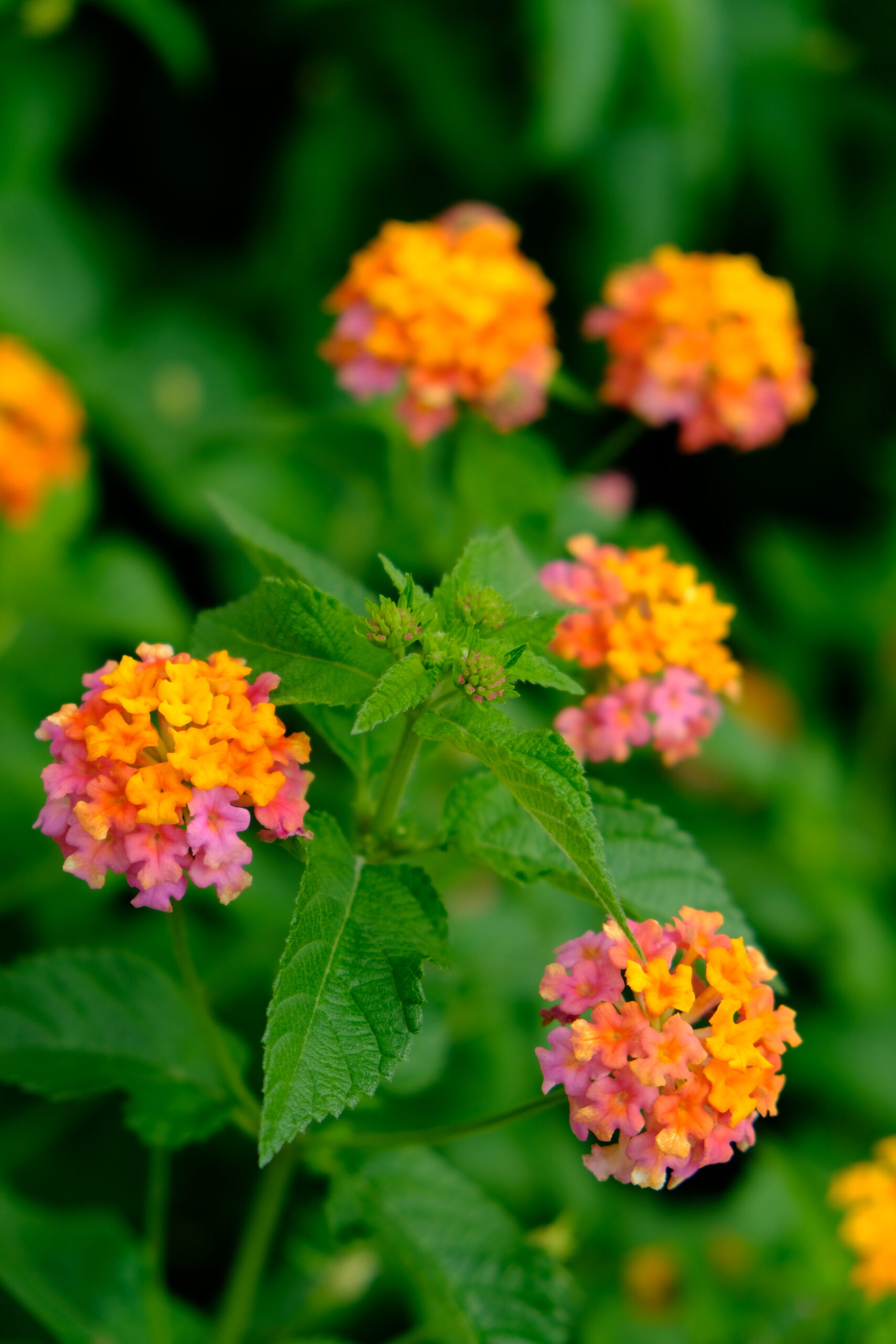
Download this month’s Top Plant Picks!